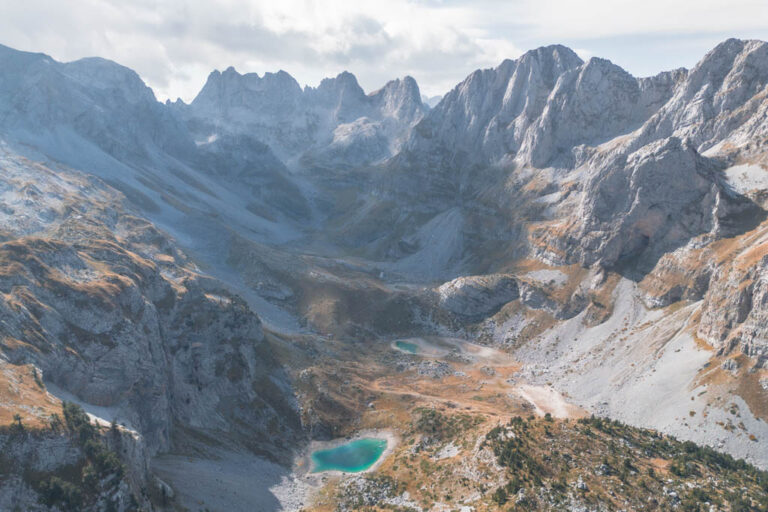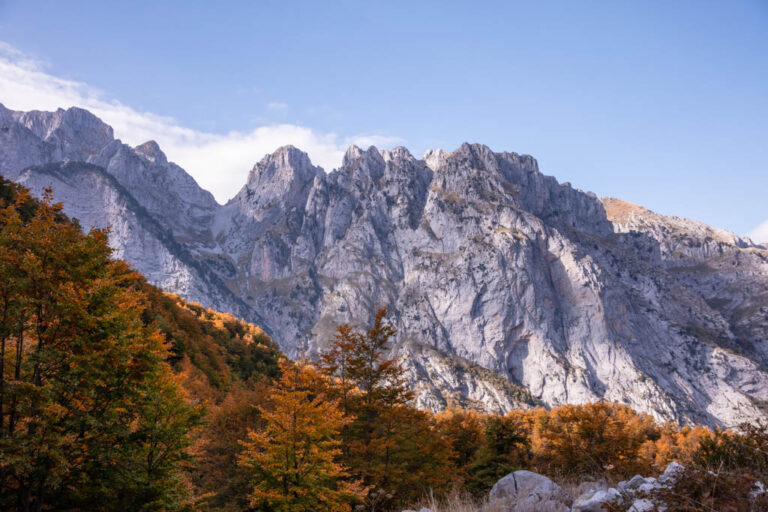Podgorica: A Quick Guide to Montenegro’s Capital
Podgorica: A Quick Guide to Montenegro’s Capital was originally published in 2024
Podgorica doesn’t get a lot of love from passersby. I had seen plenty of statements describing it as Europe’s most boring capital and that it was ugly and a dump but to be honest, I quite liked Podgorica.
After wrapping up our trek along the Peaks of the Balkans, my friend Bekah and I beelined for Podgorica, excited for a city break after the hike.
One thing that makes Podgorica stand out is its smattering of brutalist architecture. Podgorica was almost completely leveled in a bombing campaign during WWII, hence why the city ended up with so much brutalist-style architecture.
Pair that with the fact that the city center is easily walkable, Podgorica was a great addition to our Balkans itinerary.
Need Travel Insurance and Evacuation Services for Montenegro?
Start shopping for travel insurance plans over at IATI Insurance. Readers of the Adventures of Nicole get a 5% discount off your plan.
The Adventures of Nicole partners with Global Rescue to offer the world’s leading medical evacuation and security advisory services. To travel with peace of mind, shop evacuation coverage at Global Rescue.
How to Get to Podgorica
You can easily arrive in Podgorica by bus, train, or flight.
We arrived and departed Podgorica by bus from Kosovo to Albania. It’s also worth noting that the bus and train stations are conveniently situated next to each other, and approximately a 15-minute walk from the city center.
By Bus
Direct bus services connect Podgorica with neighboring countries, including routes with Tirana, Albania; Sarajevo, Bosnia and Herzegovina; Dubrovnik, Croatia; Pristina, Kosovo; and Belgrade, Serbia.
By Train
Podgorica is also accessible by train along the picturesque Belgrade to Bar railway line. Daily trains depart from Belgrade, offering a scenic journey lasting approximately 10 hours.
By Plane
Podgorica International Airport serves as the country’s main air hub, offering flights from various European destinations, including low-cost carriers.
The best way to reach the city center is by taxi as you will find a line of them at the arrivals hall. Expect fares to range from 10-15€, depending on your negotiation skills.
The train stop, “Aerodrom,” is about a 20-minute walk from the airport, but train services are infrequent making it not a very viable option for most.
Where to Stay in Podgorica
Since we were only in Podgorica for a shorter visit, we opted to stay at Hotel Terminus which is located right outside the Podgorica Bus Station as we didn’t want to haul our backpacks into the city center for our couple-night stay.
In the city center, a highly recommended option is the Boscovich Boutique Hotel. Those looking for something cheap and decent in the city center should check out the Stars Aspava Blue Hostel.
Best Restaurants in Podgorica
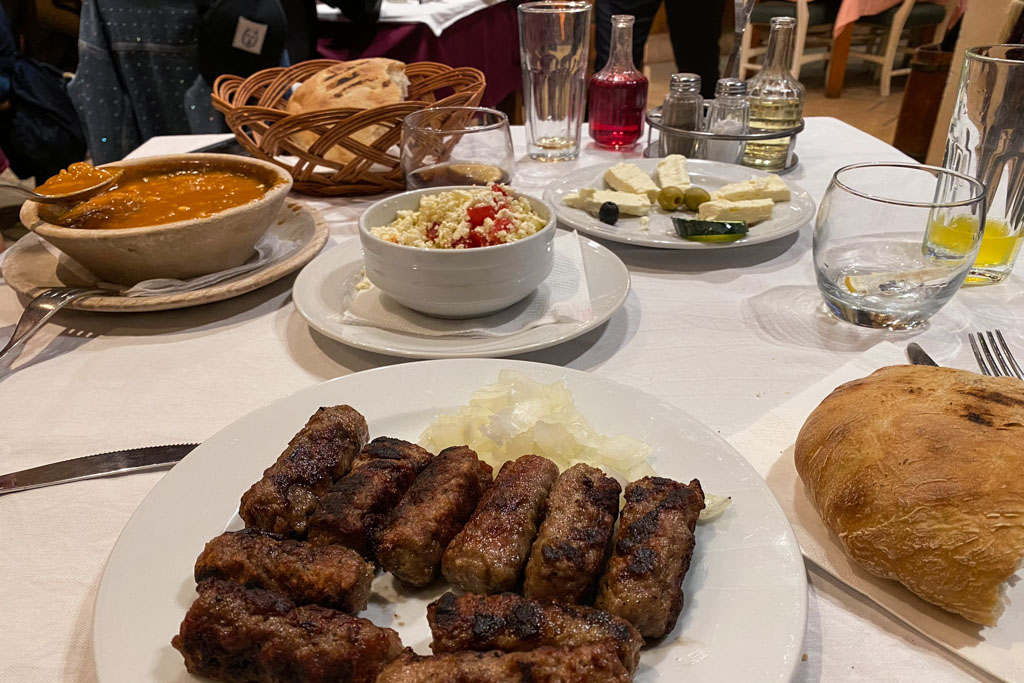
- Pod Volat: One of the best meals we had on our recent Balkans trip was here at Pod Volat. Pod Volat features a menu of traditional Montenegrin and Balkan cuisine.
- Mayka Restaurant: Mayka is an ethno-restaurant offering a diverse selection of traditional Montenegrin cuisine with innovative twists.
- Kod Feta: Known for their unique spins on the traditional burek. You can find them with a variety of fillings and even vegetarian and vegan options.
Best Time to Visit Podgorica
Spring and autumn are the best times to visit Podgorica, owing to the pleasant temperatures. Summer can be downright boiling and winter can be a bit cold.
Things to Do in Podgorica
Stara Varoš (Old Town)
Stara Varoš, Podgorica’s Old Town is one of Podgorica’s oldest districts, tracing its roots back to the time of Ottoman rule. Once the heart of the city between the 15th and 18th centuries, Stara Varoš, like much of Podgorica, suffered significant destruction during World War II.
Despite the devastation, remnants of its historic past endure, including the iconic Clock Tower situated on the district’s perimeter and two mosques.
Today, Stara Varoš offers visitors a chance to wander through its labyrinthine streets, providing a glimpse into the ambiance of what old Podgorica would have been like.
King Nikola’s Residency & Contemporary Art Museum
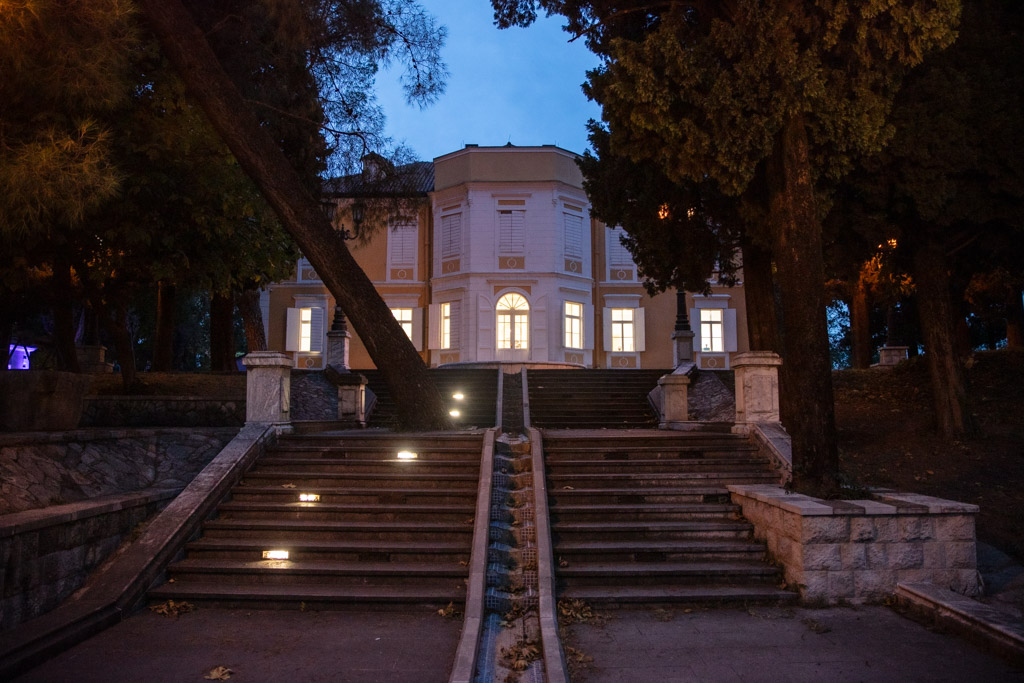
On the opposite bank of the Morača River from Stara Varoš lies Krusevac Park, housing the former royal winter residence of King Nikola, the last king of Montenegro.
Constructed in the late 19th century, this historic palace is one of the few structures in Podgorica to have survived World War II.
Since 1985, the palace and its adjacent structures have functioned as the Contemporary Art Museum, housing approximately 1500 art pieces.
The Contemporary Art Museum is only open on weekdays.
University of Montenegro
If you hadn’t gotten your fix of brutalist architecture in Podgorica, head over to the grounds of the University of Montenegro for some of the most brilliant of Podgorica’s brutalist relics. Notable buildings at the university include the student dormitories and the University of Montenegro Faculty of Engineering building.
Blok 5 Apartments

Situated near the Cathedral of the Resurrection of Christ and the University of Montenegro sits a major feat of Podgorica’s city planning- Blok 5.
Blok 5 was constructed between 1977 and 1984 and designed by architects Mileta Bojović and Vukota Tupa Vukotić and features restaurants, shops, and recreation areas on the premises.
Cathedral of the Resurrection of Christ & Monument of Nikola Tesla

The Cathedral of the Resurrection of Christ is one of Podgorica’s most impressive and notable structures, despite its relatively recent construction.
Construction commenced in 1993, however, the cathedral wasn’t consecrated until twenty years later.
Renowned as one of the most remarkable Orthodox churches of modern times, however, it is the interior that truly mesmerizes visitors.
Inside the cathedral, marble floors and intricately adorned murals cover the interior. One noteworthy feature of the murals is the depiction of Josip Tito, Karl Marx, and Friedrich Engels burning in hell.
Millenium Bridge
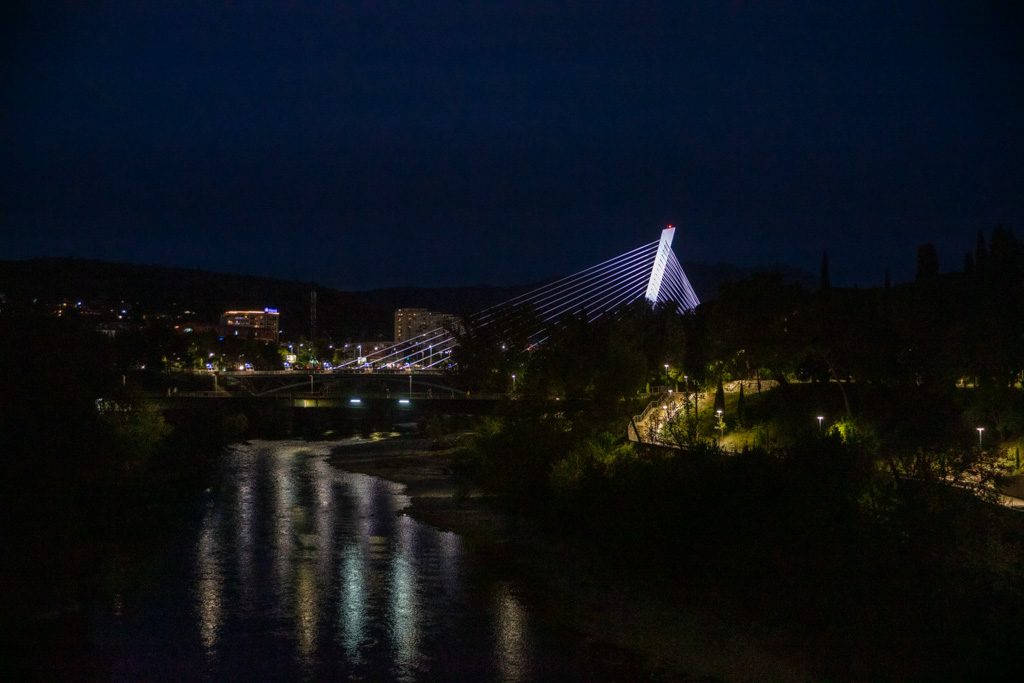
The Millennium Bridge, inaugurated on July 13, 2005, Montenegro’s National Day, crosses the Morača River.
The Millennium Bridge is one of Podgorica’s most iconic landmarks.
Independence Square
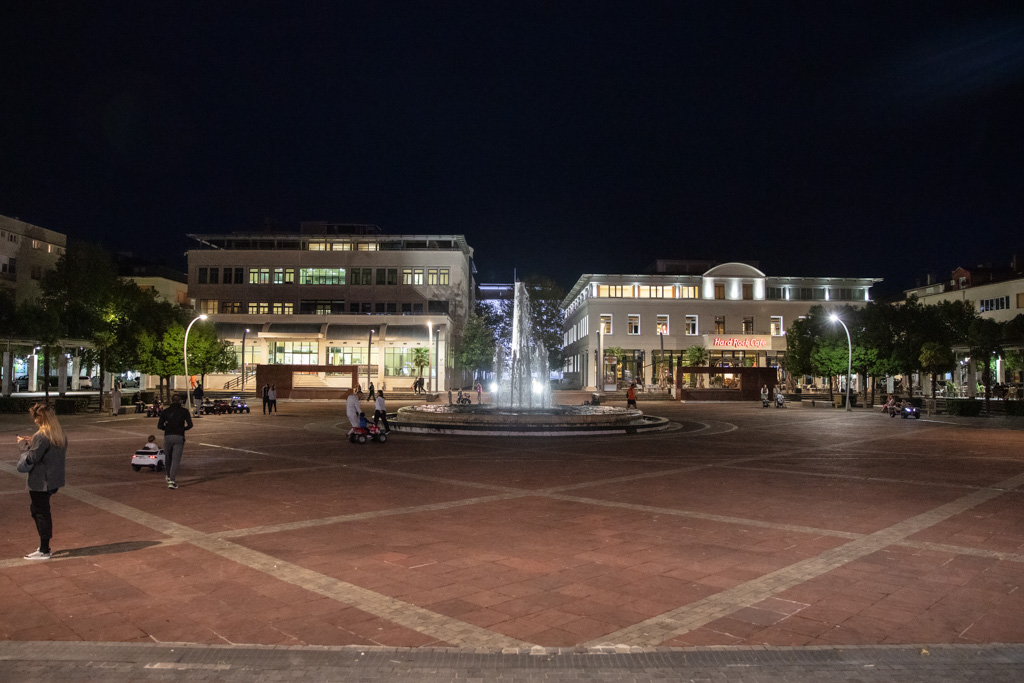
Independence Square is a massive pedestrianized square, situated in the heart of Nova Varoš (Podgorica’s New Town). The square houses the National Library of Radosav Ljumović and the State Art Gallery.
Independence Square is a lively place to head in the evenings to hang out and meet locals spending time with family and friends.
Old Ribnica Bridge & Skaline Fortress

The Old Bridge over the Ribnica River, near its meeting point with the Morača River, is another of Podgorica’s icons.
Dating back to the 15th century during Ottoman rule, the bridge bears distinct characteristics, crafted from stone with arches linking both sides of the river.
In the 18th century, local citizen Adži-Paša Osmanagić funded a renovation, hence the bridge is often referred to as Adži-Paša’s Bridge.
Just up the bank from the Old Bridge is Skaline Fortress, also constructed under Ottoman rule in the 15th century. Originally erected as a defensive stronghold, the fortress served as an ammunition depot.
Unfortunately, a devastating explosion led to its destruction, leaving only the corner tower and a portion of the fortress wall intact.
Gorica Park & Church of Saint George
Nestled within fortress-like walls on the lower inclines of Gorica Hill (fun fact: Podgorica means ‘under Gorica’ in the Montenegrin language), sits Podgorica’s oldest church- the Church of Saint George.
The Church of Saint George is known for its interior revealing remnants of centuries-old frescoes.
Gorica Hill and the Church of Saint George both sit within the confines of Gorica Park.
Day Trips from Podgorica
Dajabe Monastery
Established in 1897, Dajbabe is home to an orthodox church nestled inside a cave, adorned with religious paintings covering the low, uneven walls.
The monk who founded the monastery dedicated himself to the artwork until his passing in 1941.
Located five kilometers from central Podgorica, Dajbabe can be reached by heading south from the city center and following the signs to the monastery. A taxi ride shouldn’t cost more than €5 each way.
Cetinje
Cetinje holds significant importance as one of Montenegro’s most important historical locations.
Cetinje served as the former royal capital, and retains the honorary title of Montenegro’s capital, acting as the official residence of the country’s president.
Getting to Cetinje from Podgorica is simple as it’s situated along Montenegro’s main bus route connecting Podgorica with Budva and other destinations along the Adriatic Sea.
You’ll find several buses per day departing from Podgorica’s main bus station. Tickets cost about €3 each way, check the bus timetable here.
Medun
Medun is believed to have been built between the 4th and 3rd centuries BC, serving as a key center of the Illyrian state and tribe of Labeata. It began as a fortress, later evolving into a city.
Today, it is an important archaeological site, hosting remnants of ancient and medieval towns. Notable structures include the 18th-century Church of St. Nikola and the former residence of Marko Miljanov.
Medun is located about 13 kilometers from Podgorica’s city center. You can either opt to take a taxi there and back or to take the bus part of the way and then cover the remaining 2 kilometers on foot.
Zabljak Crnojevica
Žabljak Crnojevića is an abandoned medieval fortified town near Skadar Lake. Situated at the confluence of the Morača River with Lake Skadar, the fortress holds a significant historical presence, dating back to the 10th century.
Žabljak Crnojevića briefly served as the capital in the 15th century.
Getting here is easiest done if you have your own vehicle or join a day tour.
Skadar Lake
If wanting to get out and enjoy nature, Skader Lake is a great place to head for a day trip from Podgorica.
Several buses ply the route each day, making it simple to reach by public transport.
Have Any Questions About Visiting Podgorica, Montenegro?
Ask in the comments section below.
